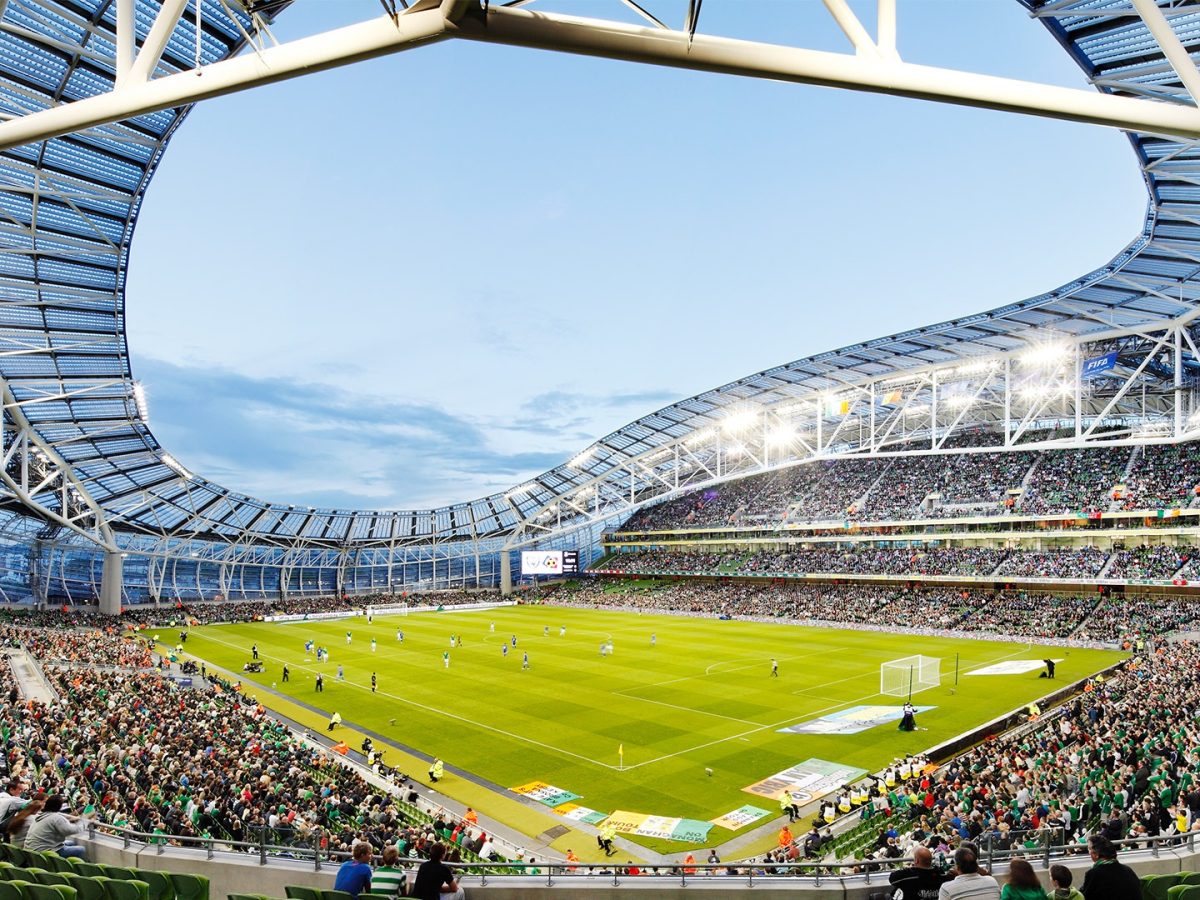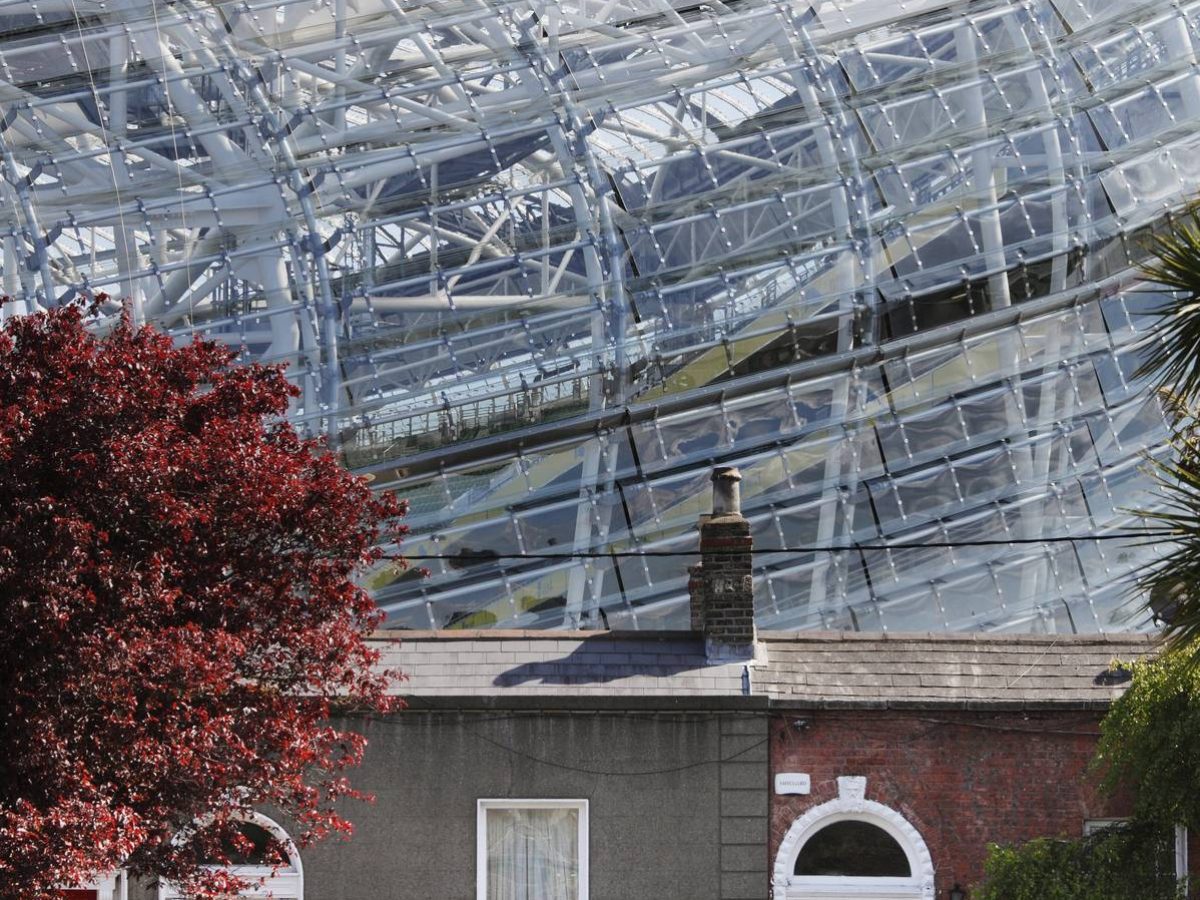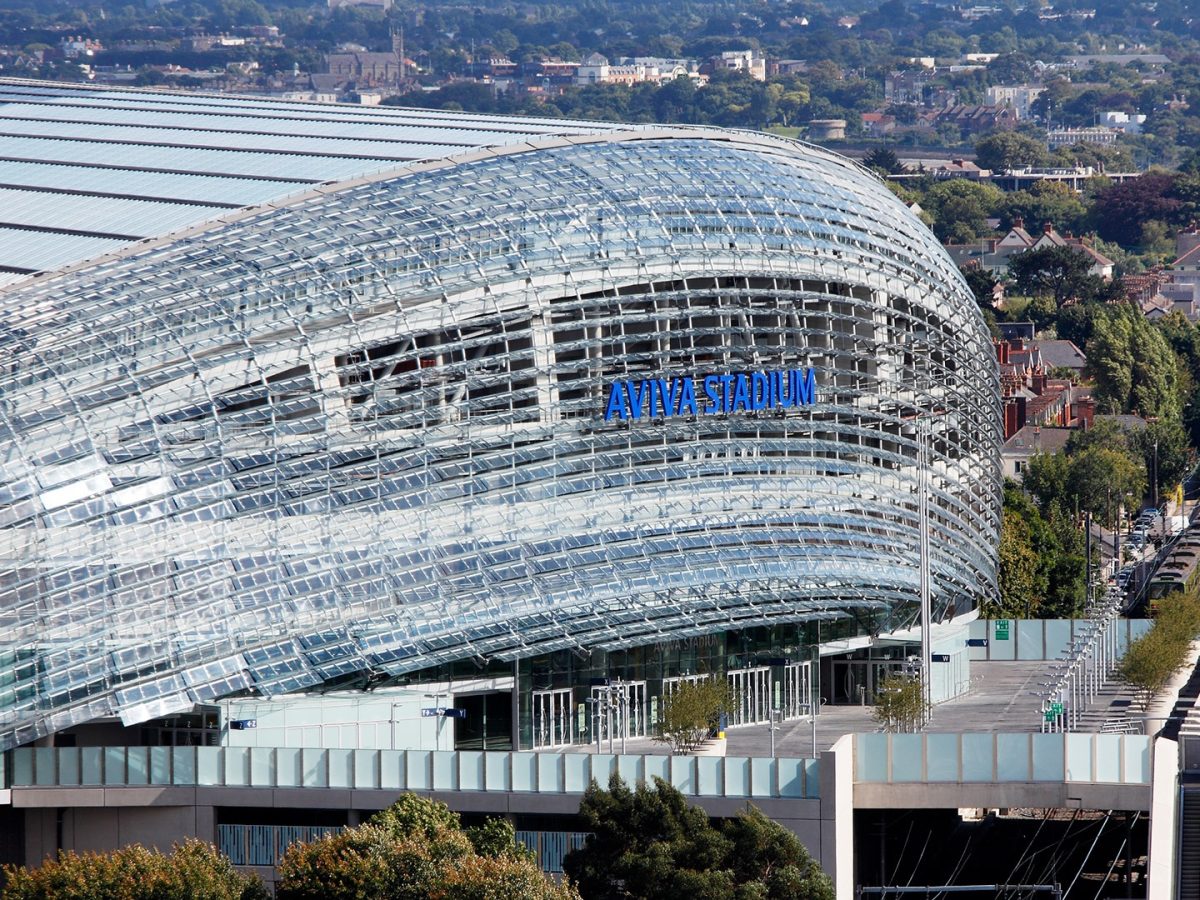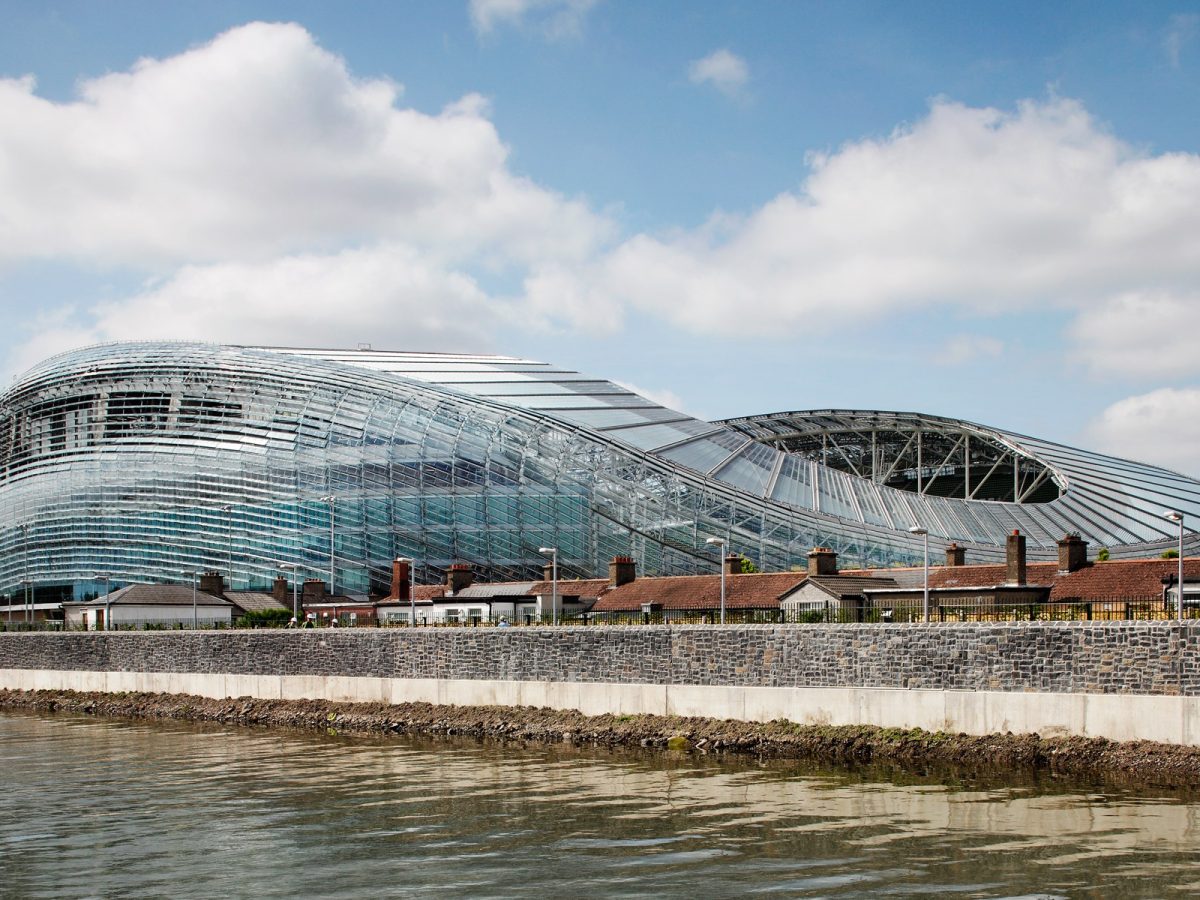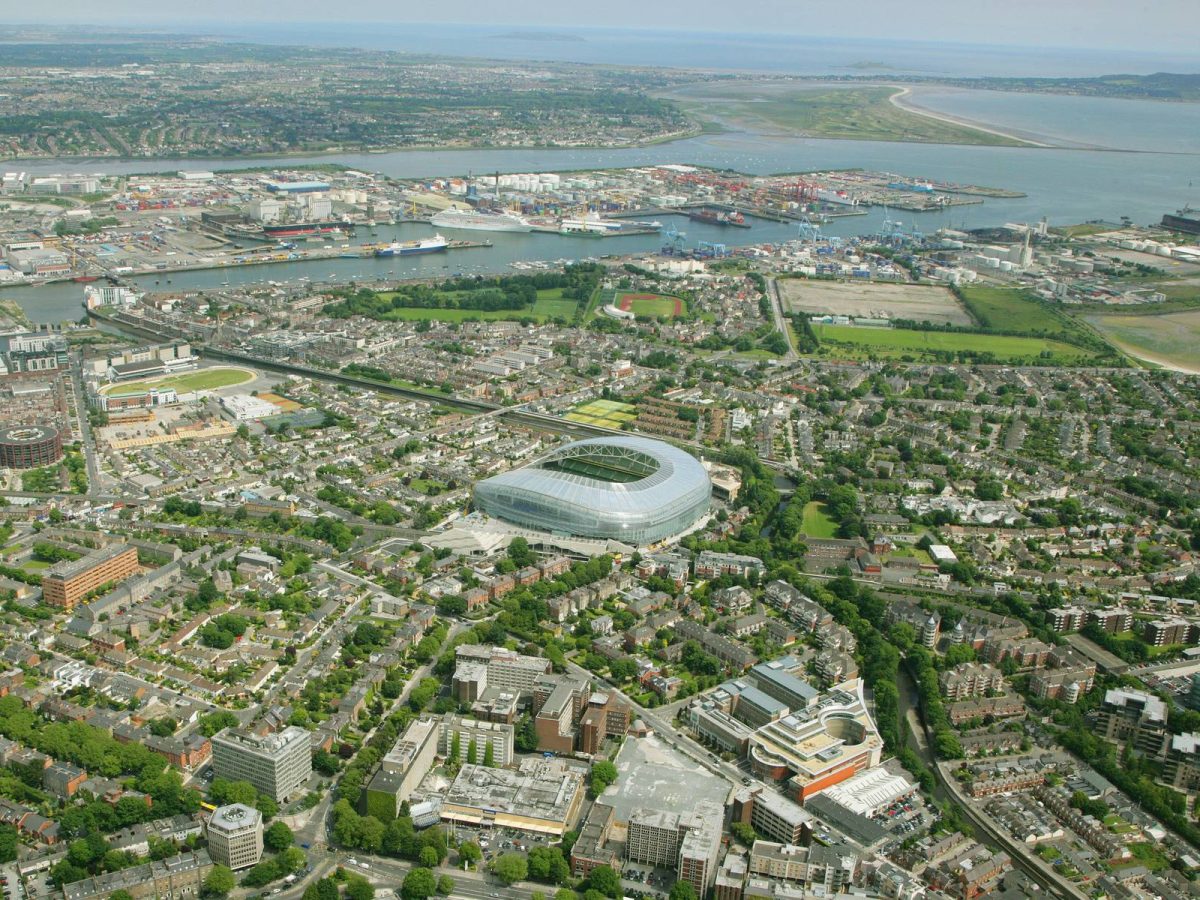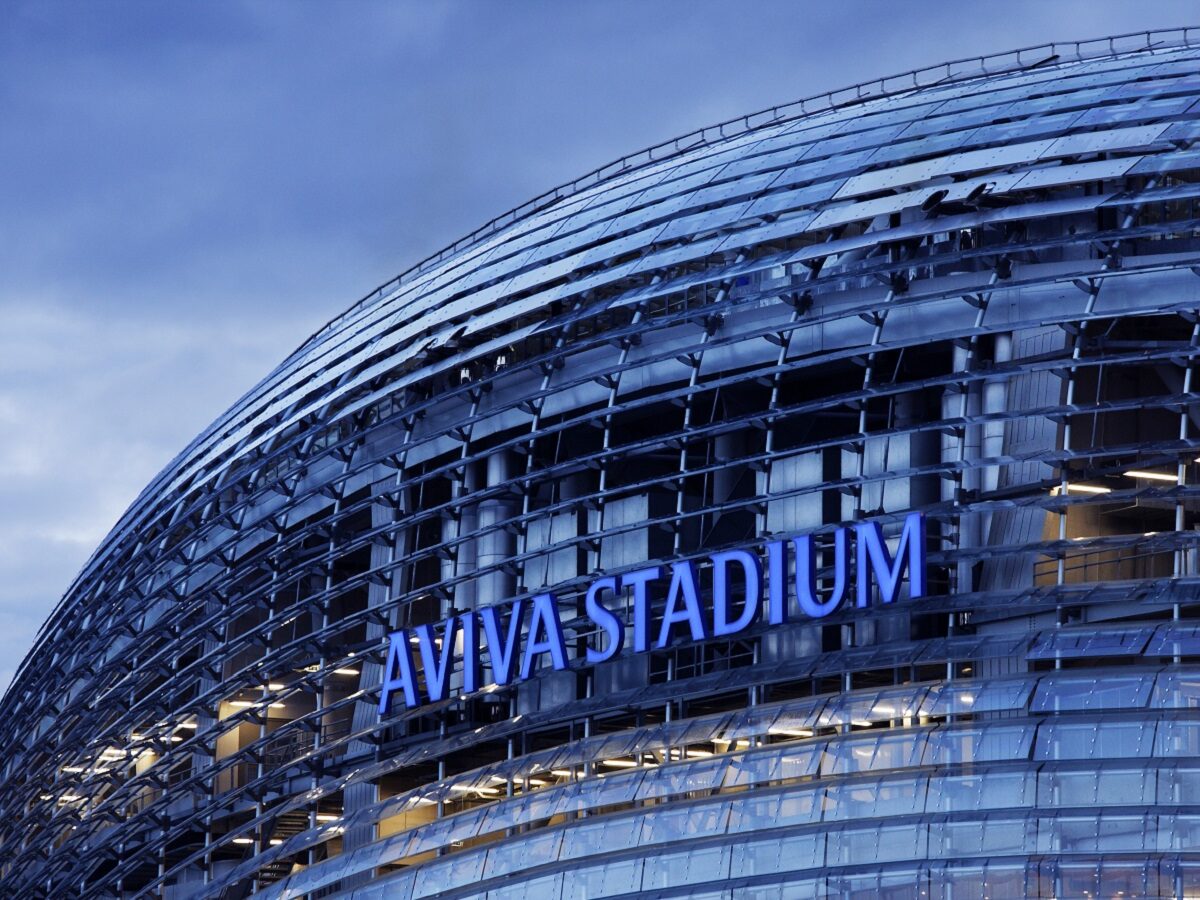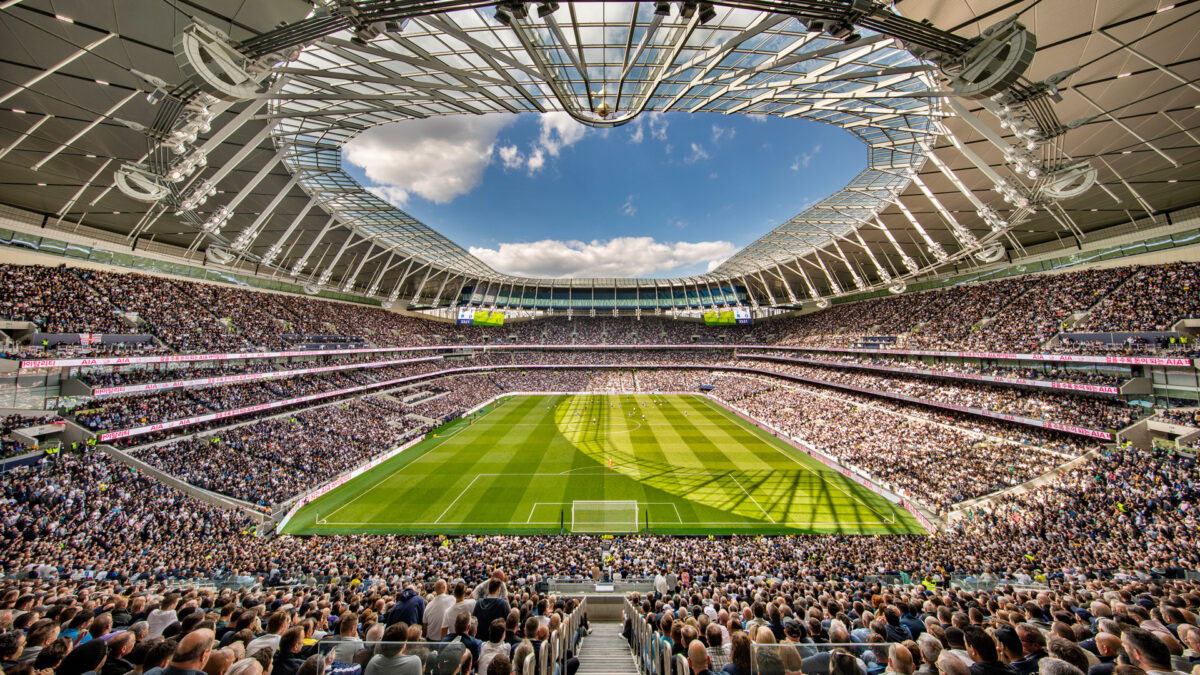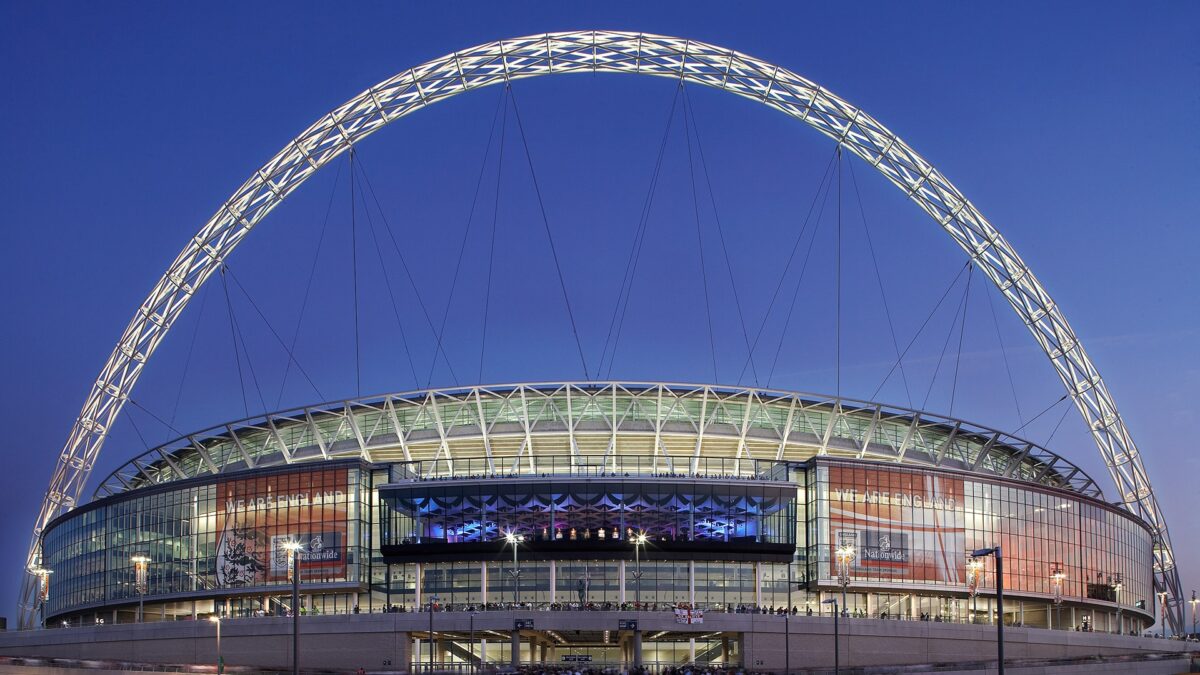Architecture
The 51,700-capacity Aviva Stadium is the national stadium for Ireland, home to both the Irish rugby union team and the Republic of Ireland football team. It is Ireland’s only UEFA Category 4 Stadium, eligible to host games in Europe’s most prestigious football competitions.
The stadium site is extremely tight, with houses with rights to light and views to the north and south and a railway line running along the eastern boundary. These constraints drove the development of the building’s dramatic 3D form, which sees the stadium bowl rise and fall in a wave-like manner to avoid blocking light to local residents. It is one of the first examples of complex, curved forms in stadium architecture anywhere in the world.
The stadium façade is clad in polycarbonate louvres and glass that reflects the sky and further breaks down the mass of the building, providing an ever-changing shimmering effect.
